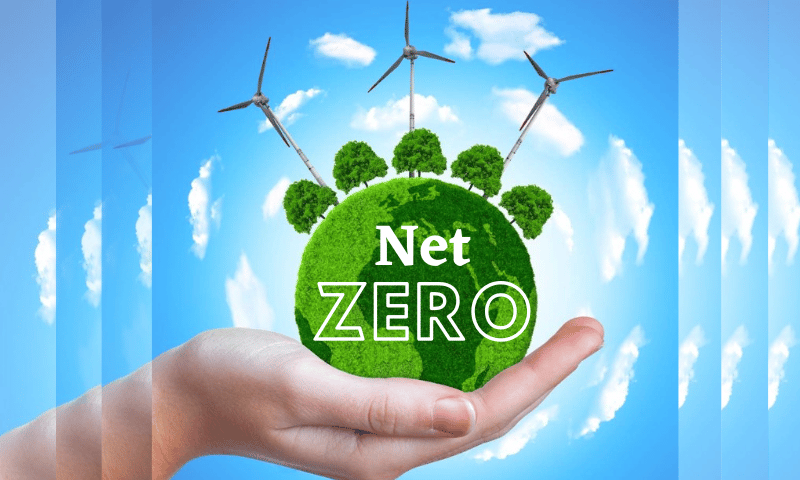Aviation is not yet on the right track to reach net zero by 2050, warns the International Energy Agency (IEA). The energy watchdog sounded the alarm for aviation and a host of other sectors, as well as technologies and infrastructure needed for the energy transition, in the latest update of its Tracking Clean Energy Progress report. The IEA is tracking the clean energy progress of more than 50 components of the global energy system against its own net-zero emissions by 2050 scenario and key interim targets for 2030.
“The clean energy economy is rapidly taking shape, but even faster progress is needed in most areas to meet international energy and climate goals,” said IEA Executive Director Fatih Birol at the report’s Jul. 12 launch. “This update … highlights some very promising developments, underlining both the need and the potential for greater action globally. The extraordinary growth of key technologies like solar and electric cars shows what is possible,” he added.
Aviation is one of 18 areas currently flagged red for “not on track” for 2030, alongside a host of hard to decarbonize heavy industries. These include steel and cement and the other transport sectors: shipping and road freight. Biofuels in general are also on red. Food crops still make up the bulk of feedstocks, alongside carbon capture, utilization and storage and wider efforts to change consumer behavior. Only three areas are currently “on track” according to the IEA – solar photovoltaic, electric vehicles and lighting. All the rest are classed as “more efforts needed.”
The International Civil Aviation Organization (ICAO) agreed its own long-term aspiration goal to achieve net zero carbon emissions from international aviation by 2050 late last year. While the IEA lauded that political agreement, it warns the UN accord is non-binding and doesn’t set any intermediate decarbonization goals. Domestic flights aren’t included in ICAO’s Carbon Offsetting and Reduction Scheme for International Aviation (Corsia), which currently relies heavily on carbon offsets.
Upward Path for Aviation Emissions
Carbon emissions from aviation were already back to 80% of pre-pandemic levels last year and are on track to exceed the more-than 1 billion tons reached in 2019 by around 2025. Gains in average fuel efficiency per revenue ton kilometer of 1.8% per year between 2010-2019 have failed to keep pace with more than 5% per year growth in demand for air travel. Further fuel efficiency improvements of at least 2% are needed by 2030 through airframe and engine design, alongside rapid innovations in sustainable aviation fuel (SAF) and industry operations. The IEA also cites the need for new measures to curb demand for air travel — policies that the airline industry would vociferously oppose.
Aviation emissions need to get below 950 million tons — or 8% lower than 2019 levels — by 2030 to get the industry on track to hit net zero by 2050. The IEA’s pathway calls for a 6% reduction in international emissions to under 595 million tons by the end of the decade. Emissions from domestic flights would need to fall by a heftier 11% to less than 360 million tons.
Slow SAF Progress
SAF needs to make up 10% of the global jet market by 2030 under the IEA’s net zero pathway. That is in line with a growing number of individual airline ambitions, but still looks very optimistic for the industry as a whole. SAF makes up just 0.1% of the market currently and is unlikely to exceed 1%-2% by 2027 based on planned production capacity, according to the IEA. Many of the plants already announced won’t start up in time to make a difference by 2030. Even the EU’s supposedly ambitious blending mandate only calls for 6% SAF by 2030.
Far more SAF friendly policies are needed than the current US Inflation Reduction Act and Europe’s ReFuelEU Aviation. The IEA is recommending that policy makers adopt both sorts of measures in tandem in a bid to scale up SAF volumes as quickly as possible. US tax breaks help promote SAF production, while Europe’s blending mandates work to guarantee demand.
In a bid to curb demand for air travel, the IEA also called for taxes on aviation fuels used for what is calls “excessive flying”: “Only a minority of the world flies,” the IEA concludes. “Progressive tax rates that increase with flight frequency as well as higher taxes on premium class tickets could discourage excessive flying,” it suggests.
For airlines it advises starting to use SAF as soon as possible. “Those that act early will benefit not only from asserting their leadership in corporate social responsibility, but from being the first to gain experience of innovative practices and technologies that will eventually be adopted widely.”

